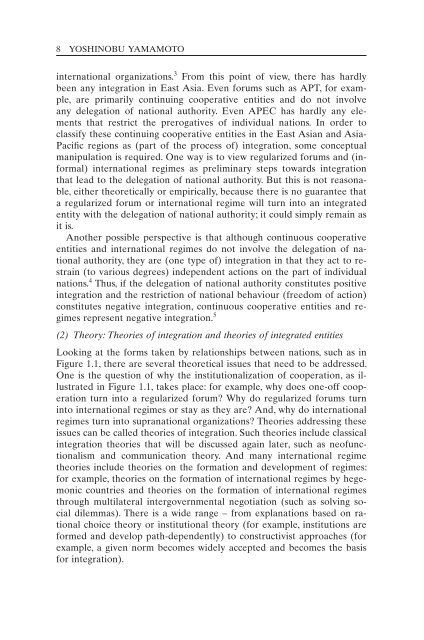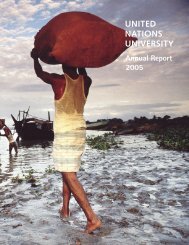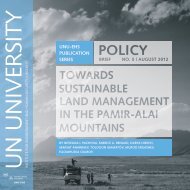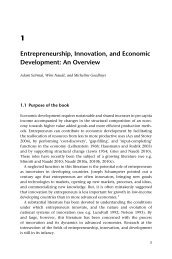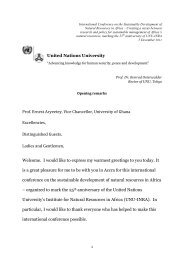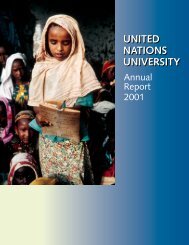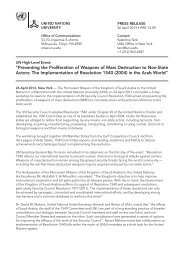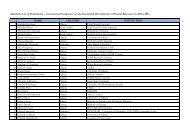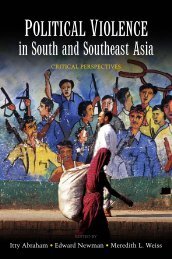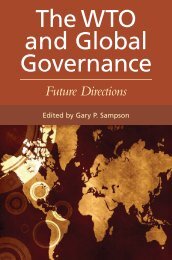Sample Chapter - United Nations University
Sample Chapter - United Nations University
Sample Chapter - United Nations University
Create successful ePaper yourself
Turn your PDF publications into a flip-book with our unique Google optimized e-Paper software.
8 Yoshinobu Yamamoto<br />
international organizations. 3 From this point of view, there has hardly<br />
been any integration in East Asia. Even forums such as APT, for example,<br />
are primarily continuing cooperative entities and do not involve<br />
any delegation of national authority. Even APEC has hardly any elements<br />
that restrict the prerogatives of individual nations. In order to<br />
classify these continuing cooperative entities in the East Asian and Asia-<br />
Pacific regions as (part of the process of) integration, some conceptual<br />
manipulation is required. One way is to view regularized forums and (informal)<br />
international regimes as preliminary steps towards integration<br />
that lead to the delegation of national authority. But this is not reasonable,<br />
either theoretically or empirically, because there is no guarantee that<br />
a regularized forum or international regime will turn into an integrated<br />
entity with the delegation of national authority; it could simply remain as<br />
it is.<br />
Another possible perspective is that although continuous cooperative<br />
entities and international regimes do not involve the delegation of national<br />
authority, they are (one type of) integration in that they act to restrain<br />
(to various degrees) independent actions on the part of individual<br />
nations. 4 Thus, if the delegation of national authority constitutes positive<br />
integration and the restriction of national behaviour (freedom of action)<br />
constitutes negative integration, continuous cooperative entities and regimes<br />
represent negative integration. 5<br />
(2) Theory: Theories of integration and theories of integrated entities<br />
Looking at the forms taken by relationships between nations, such as in<br />
Figure 1.1, there are several theoretical issues that need to be addressed.<br />
One is the question of why the institutionalization of cooperation, as illustrated<br />
in Figure 1.1, takes place: for example, why does one-off cooperation<br />
turn into a regularized forum Why do regularized forums turn<br />
into international regimes or stay as they are And, why do international<br />
regimes turn into supranational organizations Theories addressing these<br />
issues can be called theories of integration. Such theories include classical<br />
integration theories that will be discussed again later, such as neofunctionalism<br />
and communication theory. And many international regime<br />
theories include theories on the formation and development of regimes:<br />
for example, theories on the formation of international regimes by hegemonic<br />
countries and theories on the formation of international regimes<br />
through multilateral intergovernmental negotiation (such as solving social<br />
dilemmas). There is a wide range – from explanations based on rational<br />
choice theory or institutional theory (for example, institutions are<br />
formed and develop path-dependently) to constructivist approaches (for<br />
example, a given norm becomes widely accepted and becomes the basis<br />
for integration).


